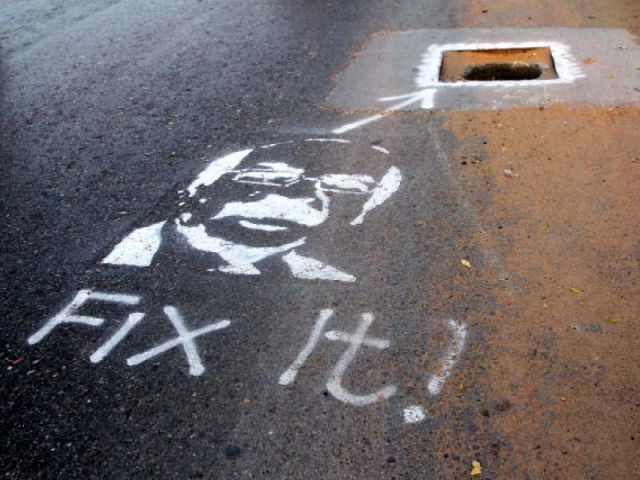Last year was perhaps the best in this regard, especially with the revival of public art in the Pakistan. From IAMKHI beautifying the walls of Karachi with truck art and graffiti, to The Fearless Collective engaging the communities in storytelling via murals and Lahore Biennale Foundation (LBF)’s installation, Intersections, at Istanbul Chowk, Lahore, art is slowly being used as a tool for dialogue and social change. This has served in not only broadening the definitions of what art is – something much more than a well-proportioned, perfectly made piece hanging on pristine walls – but also encouraging the viewers to think constructively.
But more than that, the rebirth of public art and its focus on social issues has led to the people recognising their rights and using this medium to demand change. Every piece of public art is a political statement and serves as a reminder of the kind of beliefs and values a society holds. Perhaps this is why the stir caused by Alamgir Khan’s effort, Fix It, to highlight problems faced by Karachiites, and the government responding to the requests has been a welcome change, a reprieve during unstable socio-political times. It ignites hope that perhaps we are moving towards a change for the better, a change where the common man is more conscious of his role and rights in the society and is an active participant in ensuring their security.
 Photo: Fix It Facebook page
Photo: Fix It Facebook page Photo: Fix It Facebook page
Photo: Fix It Facebook page Photo: Fix It Facebook page
Photo: Fix It Facebook page Photo: Fix It Facebook page
Photo: Fix It Facebook page Photo: Fix It Facebook page
Photo: Fix It Facebook page Photo: Fix It Facebook page
Photo: Fix It Facebook page Photo: Fix It Facebook page
Photo: Fix It Facebook page Photo: Fix It Facebook page
Photo: Fix It Facebook page Photo: Fix It Facebook page
Photo: Fix It Facebook pageRegardless of this, there are two questions that have been largely avoided, or ignored in light of the positive support ‘Fix It’ has garnered.
As a society just entering into the realms of public art as a political statement, we must consciously, even if grudgingly, try to be aware of the downside of public art. One of the criticisms to Alamgir Khan’s graffiti have been that it is more of vandalism of public property than a piece of art – not much different from the wall chalking around the city highlighting everything from homeopathic ventures to political slurs.
So, where do we draw the line?
In Khan’s case of gaping potholes and ditches, does the notion of vandalism still apply when the caretakers of that property are content in leaving it in a derelict condition, despite having the responsibility of managing it?
Finally, looking at the response this campaign has resulted in, does it still count as destruction of public property when it has led to the reconstruction of that destructed property?
Political graffiti, by its very definition, aims to highlight a social issue and start public discourse, and Fix It meets these requirements wonderfully – even if rather unsophisticatedly. The best kind of activism is one that is intelligent yet subtle and manages to hit the mark in an unobtrusive fashion. The direct mockery aimed at Chief Minister Qaim Ali Shah, while effective in its measures, leads one to wonder about the thought process behind the campaign.
Coupled with Alamgir Khan’s statement of being against the idea of wall chalking and his repeated insistence at this being a purely apolitical campaign – contradicting the very essence of public art – one can’t help but question the movement’s validity and reliability. Is this another episode of the blame game?
Our history and present is dotted with people pointing fingers at others, all the while shirking responsibilities assigned to them – a phenomenon that is directly proportional to the amount of power one has.
As hard as these questions are, we need to stop evading the hard facts. In times when we desperately need to initiate action and conversation about the ills and failures of society and our leaders at large, one can only hope against all odds that campaigns like these are a start of a much-needed revolution, rather than a pissing contest.



COMMENTS
Comments are moderated and generally will be posted if they are on-topic and not abusive.
For more information, please see our Comments FAQ